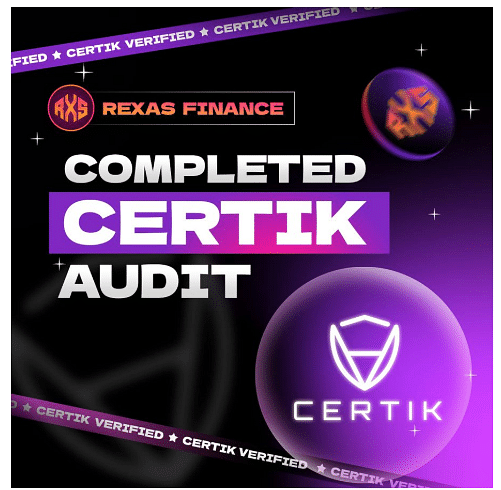Sui (SUI) gained early recognition as a blockchain capable of rivaling Solana (SOL) with its high-speed transactions and developer-friendly environment. However, Rexas Finance (RXS) is now drawing attention with its strong presale performance and focus on real-world asset (RWA) tokenization. The 18,500% surge in the RXS price since presale has the potential to outdistance Sui in terms of adoption and investor interest.
Rexas Finance Presale Gains and Market Interest
Rexas Finance is in the final phase of its presale, with RXS priced at $0.20.The token will launch at $0.25 on June 19, 2025, after raising over $47.2 million out of its $56 million target. A high percentage of over 91% has been purchased from the token presale, evidence that investors believe in its value.
https://x.com/rexasfinance/status/1903514983000113618
Since the presale began at $0.03, RXS has surged by 566%, and analysts predict further growth. The project design of token distribution provides market liquidity and benefits users who bought tokens at the early stage. Market demand during presales favors faster price appreciation for RXS after it begins trading on exchanges.
Real-World Asset Tokenization as a Key Growth Factor
One of the main factors driving interest in Rexas Finance is its focus on RWA tokenization. The platform allows users to tokenize assets such as real estate, gold, and intellectual property. The platform introduces investment opportunities for users who want to expand their investment scope beyond cryptocurrency speculations. The global market for tokenized assets is expected to reach $16 trillion by 2030. Rexas Finance constructs a system which enables retail investors to buy pieces of ownership in formerly inaccessible financial assets. This model contrasts with Sui, which focuses more on decentralized applications (dApps) and blockchain development rather than real-world financial integration.

Tokenomics and Staking Rewards
Rexas Finance has designed its tokenomics to promote long-term stability and market growth. The maximum RXS token supply stands at 1 billion tokens while presale distribution amounts to 42.5% of total supply. The allocation for smooth trading stands at 15% and staking rewards receive 22.5% of the total supply. The team’s allocation for RXS tokens amounts to no more than 3% to minimize control concentration. Staking rewards provide incentives for long-term holders, while the treasury supports yield optimization. The growth strategy of Sui depends on network expansion but RXS integrates a combination of multiple revenue streams. This structure supports sustainable price appreciation and encourages long-term adoption.
Security, Exchange Listings, and DeFi Integration
Security stands as a top priority for Rexas Finance because the project received an inspection by blockchain security firm CertiK. The audit performed by CertiK ensures the security of platform smart contracts thus adding investor confidence to the system.
Website: https://rexas.com
Whitepaper: https://rexas.com/rexas-whitepaper.pdf
Twitter/X: https://x.com/rexasfinance
Telegram: https://t.me/rexasfinance

In addition to tokenization, Rexas Finance incorporates DeFi features such as staking, liquidity pools, and a multi-chain trading platform. The forum within the Rexas Finance ecosystem supports blockchain startups which expand RXS’s practical applications.
Rexas Finance is listed on CoinMarketCap and CoinGecko, further increasing its visibility.
Conclusion: Could Rexas Finance Surpass Sui in 2025?
Sui began as a promising alternative instead of Solana but new blockchain projects enter the landscape, making it less competitive. Rexas Finance merges blockchain technology solutions with genuine investment opportunities to stand out from other competitors.
With RXS experiencing an 18,500% rally from its initial presale price, it could surpass Sui in adoption and market demand. As more investors recognize the potential of RWA tokenization, Rexas Finance may establish itself as a key player in the blockchain-based asset management sector.
ThePrint BrandIt content is a paid-for, sponsored article. Journalists of ThePrint are not involved in reporting or writing it.

